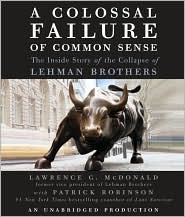
With 2009 expiring swiftly, what lies on the horizon for 2010--for MBA's, for Consortium students and alumni, and for finance professionals?
After the implosion of 2008, the year 2009 could only be marked by careful, straining efforts to pull ourselves up. Does 2010 mean full-speed ahead, or does it mean a continued careful, meandering recovery?
Let's try to project.
1. MBA finance internships. Last year was abysmal. This year there are promising signs. Consortium first-year students are earning their way onto select interview lists; some already have offers for the summer, 2010. They are, in fact, getting attention and offers in corporate-finance roles--virtually non-existent last year. January and February will tell a better story. Sales & trading opportunities are still fleeting, but that is a typical pattern.
2. Better moods, improved business opportunities. There are ongoing expectations of a continuing, slow rise in corporate finance and capital markets. Moods are better no doubt. But a nagging memory of the harshness of late-2008, early-2009 continues. Corporations are poised, ready and daring to do deals to grow and expand, but may adopt a go-slow, risk-adverse approach. Banks continue to clean up their balance sheets, sell toxic assets and implement risk-management procedures and systems. Both will try to incorporate lessons learned from the 2008.
3. Increased interest in banking and finance among prospects and current MBA students. Interest in finance and banking didn't evaporate, as some of us expected. The numbers among Consortium students and alumni didn't decline materially. With improved markets and optimism in the recruiting process, there may be an upturn in 2010--although slight--in students' interest in finance and banking. Students, too, may start to express their interests more vocally--not cautiously and with uncertainty as in the past year or so.
4. Renewed confidence in private-sector opportunities. Over the past year, students and alumni all of a sudden recognized the attraction of pursuing careers in the public sector: U.S. Treasury, Federal Reserve, Securities & Exchange Commission, etc. The public sector grabbed talent and deserved to do so. It sold MBA students and others in finance on the value and learning experience of working in financial regulaton.
In a recovery, finance professionals will have a different appreciation of the important roles of regulators and the opportunities they present. They will find the experience of working for regulators attractive and the skills can be transitioned to the private sector.
In a recovery, nonetheless, students will once again pay attention to the compensation packages of the private sector (banks, hedge funds, private-equity firms, etc.) and over time will be willing to take a little more risk in their careers.
5. Interest in more stable sectors. One out-growth from the market collapse is students' interest in promising, stable careers. They are now paying attention to sectors where business revenues are predictable and risks well-managed. Private-wealth management has become a popular pursuit among MBA's. Investment management and corporate-treasury also offer more stable opportunities. Companies and banks see this and have become to gear recruiting efforts to attract talent to these sectors, talent that might have single-mindedly pursued M&A or technology banking in previous years.
6. Lukewarm interest in sales & trading. Among students and younger professionals, sales & trading is an intriguing sector. But with uncertain, unstable markets, banks' recruiting efforts are one-off and unpredictable, and those interested in this sector will pursue only if they have unrelenting interest, especially in a specific sub-sector (e.g., derivatives trading, fixed-income sales, or equity markets).
Too much uncertainty about the usefulness of derivatives, about market liquidity, or about market performance will turn off those casually interested in this sector. Financial innovation, which sparked this sector for much of the 2000's, will be slow and deliberate. As a result, opportunities will be sporadic.
7. Rebounds in performance. Such big banks as Citi, Morgan Stanley and BoA should continue to rebound in performance and will continue to expand and try to compete with all other banks. These banks with new management, new structures, new capital, and new strategies will continue to attract talent in many sectors. They will no longer be fighting for survival.
8. New financial regulation. New regulation will be implemented more slowly than we expected in early 2009. And it may not be as strict or rigorous as expected or, in some cases, as hoped for. It may take all of 2010 and parts of 2011 to implement new derivatives-trading structures, tighter capital guidelines for banks, and new procedures for introducing new financial products. It will come, but gradually.
9. Hot topics. The topics on the tips of tongues in early 2010? Investment banks will continue to help smaller banks across the country find new capital. With expected tax increases among the wealthy, private bankers will step in to advise in tax strategies and help clients re-balance portfolios.
With new confidence, corporations may decide to grow via acquisitions again, spawning deals for M&A bankers. Corporate lending will grow, but mostly for large, high-rated borrowers. Banks are still wrestling with how to manage the risks of lending to low-rated or smaller borrowers.
10. A renewed interest in diversity. For some companies, firms and banks, in 2008-09, diversity got pushed to the back of the corporate agenda. They lacked time to focus on it and lacked the effort to sustain the momentum of the mid-2000's. We all witnessed the crumbling of progress, when large numbers from under-represented groups were victims in the massive layoffs in finance circles.
In 2010, the same institutions will put diversity back on the agenda (near the top, if not at the top), but will need to recover from the backward progress the past year. They may also need to convince minorities and women, who observed the shake-out the past two years, that it's worth their while to return to banking, finance, trading, and investing.
The year 2010 promises to bring further improvements, optimism and hope. Let's hope it exceeds expectations.
Tracy Williams









